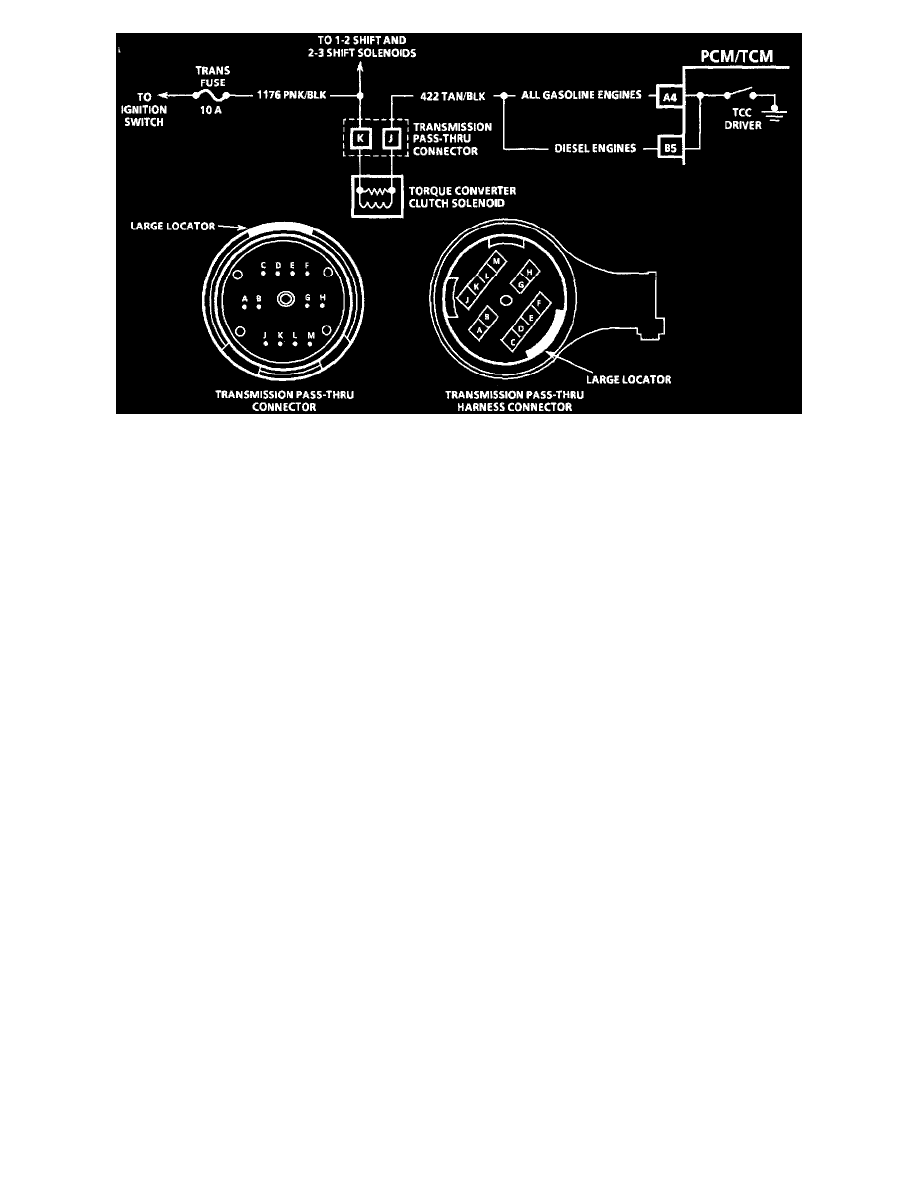K 3500 Truck 4WD V8-350 5.7L (1993)

TCC Circuit
CIRCUIT DESCRIPTION:
The purpose of the Torque Converter Clutch (TCC) is to eliminate the power loss from the torque converter when the vehicle is in cruise. This
allows the convenience of the automatic transmission with the fuel economy of a manual transmission.
Switched battery voltage is supplied to the TCC solenoid located on the valve body. When the PCM/TCM closes the TCC driver, the solenoid
activates a valve in the valve body. Pressure is then applied to the torque converter clutch. The PCM/TCM will continue to open and close the
TCC driver very rapidly to modulate pressure.
TEST DESCRIPTION:
Number(s) below refer to circled number(s) on the diagnostic chart.
TCC will engage when:
-
Vehicle speed is greater than 30 mph (48 km/h).
-
Engine is at normal operating temperature (above 65°C) (149°F).
-
Transmission is at normal operating temperature 95°C (195°F).
-
Throttle position sensor output indicating a steady road speed.
-
Brake switch closed.
-
Third or fourth gear.
-
No DTC stored.
1. This test checks for a shorted, internal transmission harness or TCC solenoid.
2. This test checks power supply to the TCC solenoid.
3. This test checks CKT 422 for a short to ground.
4. This test checks the PCM/TCM ability to control the TCC solenoid.
DIAGNOSTIC AIDS:
-
Check all connections at the transmission pass-thru connector.
-
If they are OK, refer to "PCM/TCM Intermittent DTC(s) or Performance" or "Symptom Diagnosis".
-
The TCC solenoid is pulse width modulated and designed to keep the TCC right at the point of engagement. Some slight TCC slip is normal.
